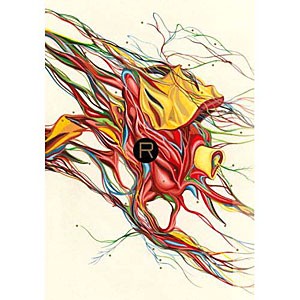In his novel, “”Rant: An Oral Biography of Buster Casey,”” Chuck Palahniuk creates a world in the not-so-distant future that is as disturbing and violent a vision as Palahniuk fans could wish for.
This is the tale of the most successful and macabre serial killer to threaten the pages of fiction: Buster “”Rant”” Casey. Though now dead himself, Rant was linked to a trail of victims who all shared the common thread of his contaminated saliva. The novel tracks the history of Rant, from his childhood to becoming a rabies super-spreader, all the way through to his burning demise.
8/10
Rant, a disturbed but unequalled genius of all things gruesome, is recreated through the accounts of his friends, family, enemies and neighbors. Palahniuk has written this novel as an oral account, with the narrator changing from one person to another every paragraph or so.
In this way, every acquaintance of Rant’s has his or her voice heard and an individual version of the history presented. From his mother, we hear about the point at which Rant stopped being the sweet little boy she hoped and turned into a nose-picking, snot-sticking monster. From his neighbors, complaints are shared about the high-school rebel he became. From his friends, we hear both the wise sayings Rant was known for, and the tales of his involvement in a nighttime demolition derby called Party Crashing. Together, these snippets create Rant.
As an oral biography, this novel identifies and hones in upon the voices of each character, and in this manner we get to know them. The difference between Rant’s family members and neighbors from small-town Middleton and his party-crashing city friends is apparent, yet not overdone.
The narrator changes make the book both easier and harder to read all at once. While the various names, voices and tones insist the reader hold a host of characters in his or her head, the changes are also refreshing. Whereas most books offer only one narrator, like him or not, “”Rant”” offers such a wide group that the reader is sure to identify with at least one.
The book manages to shock the reader on every page. Rant, whose nickname comes from the sound children make while vomiting, has death and disgust in every part of his past. His sense of smell allows him to distinguish the owner of used condoms, identifying who is sleeping with whom in his small hometown.
With this array of repugnant details, Palahniuk marks his territory as king of all that blends the dark and violent with the humorous. However, this novel also proves itself noteworthy in depth of content and strength of structure. Each testimonial we are given ties in with those around it, but also with themes of belonging, identity and religion of the darkest sort.
Though horror may be the primary reaction to much of the prose, “”Rant”” is also a very timely inspection of the events in a person’s life that form his or her identity. With a character like Rant, Palahniuk challenges the reader to spot those turning points that changed a small boy into a werewolf of a man capable of the most ghastly killings. Also, we are invited to examine those cults of people drawn to Rant, who found in him an authenticity lacking from the rest of the consumer-driven population.
Palahniuk’s new novel is not for the faint of heart or stomach, but a thrilling read for fans of clever dark humor that haunts and inspires. “”Rant”” will plunge you through a visionary but vile world that we can only hope is not an accurate prediction of our future.









